Abstract
In the present study we have tried to demonstrate circulating immune complexes (CIC) in sera from patients with pulmonary tuberculosis (TB) by three techniques; latex agglutination; 3.5% PEG precipitation and determination of optical density at 280 nm and RIA of CIC using bovine spermatozoa. About 40 normal control sera and 100 TB patients sera were investigated for the presence of CIC. Seventeen per cent cases of pulmonary TB were positive by latex agglutination while none of the control was positive. Levels of CIC as detected by PEG precipitation and RIA were significantly elevated in patients as compared to normal controls. While IgG, IgA and IgM were elevated in the CIC of patients, IgM immunoglobulins were detected only in patients and not in controls. Detection of CIC may at times be useful in diagnosis, prognosis and therapeutic monitoring of disease processes, but it is the characterization of immune complexes (IC) and identification of the specific components of these complexes which holds the greatest potential for better understanding of disease mechanisms. CIC were precipitated using 3.5% PEG from sera of patients suffering from TB. The specific anti-TB antibody component of complex was determined using S. aureus protein A as a solid phase, Anti-BCG antibody and 125I-labelled TB antigen. The specific TB antigen component of the IC was dissociated thermally from TB antibody and assayed by a radioimmunoassay technique developed in our laboratory. Patients were classified into two groups. Those those sputum was positive for Mycobacterium tuberculosis by smear and/or culture and those whose sputum was negative. The TB antigen concentrations of CIC was higher 19.1 +/- 2.3 ng/ml (mean +s.e.) in sputum positive cases, and 9.9 +/- 1.9 ng/ml in sputum negative cases as compared to 2.2 +/- 0.3 ng/ml in controls. Patient groups were significantly different from controls as well as from each other (P less than 0.001). Anti-TB antibody ratios were 11.7 +/- 1.48, 5.1 +/- 1.5 and 0.6 +/- 0.1 in sputum positive, sputum negative and controls. The significance of differences between the groups was P less than 0.001. The effect of treatment administered over a period of 12 weeks or more was evaluated. It was observed that in patients with persistent demonstration of M. tuberculosis in the sputum, the TB antigen and TB antibody levels of CIC were consistently high. In patients who responded to anti-tubercular drugs the TB antigen levels decreased progressively while TB antibody levels remained high.(ABSTRACT TRUNCATED AT 400 WORDS)
Full text
PDF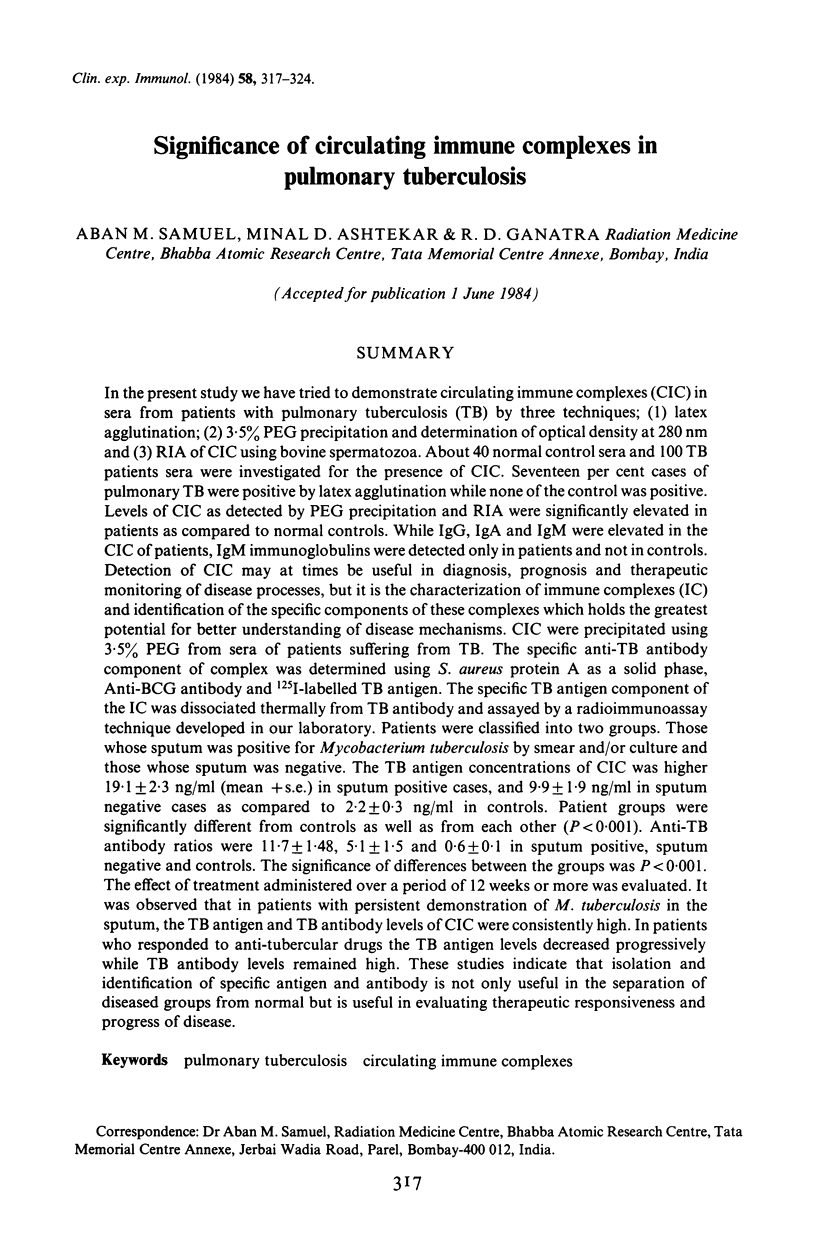
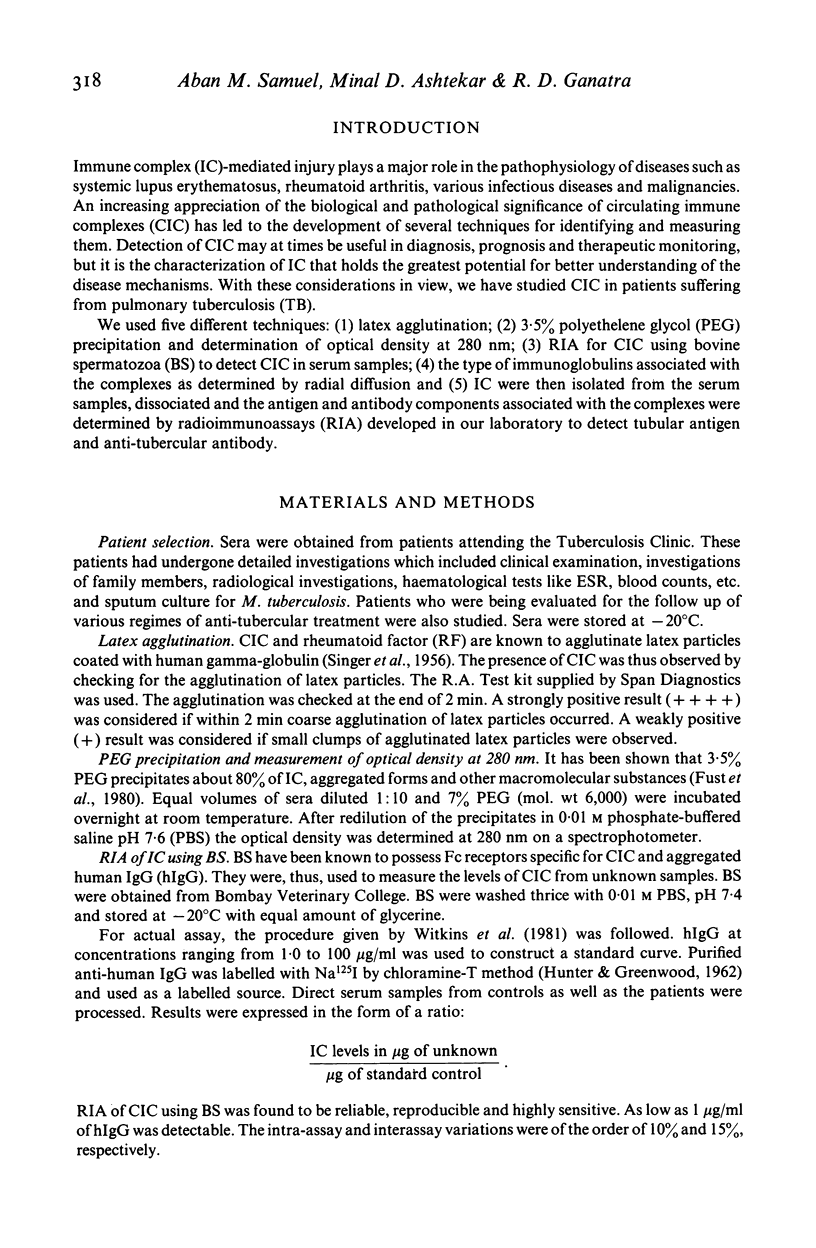
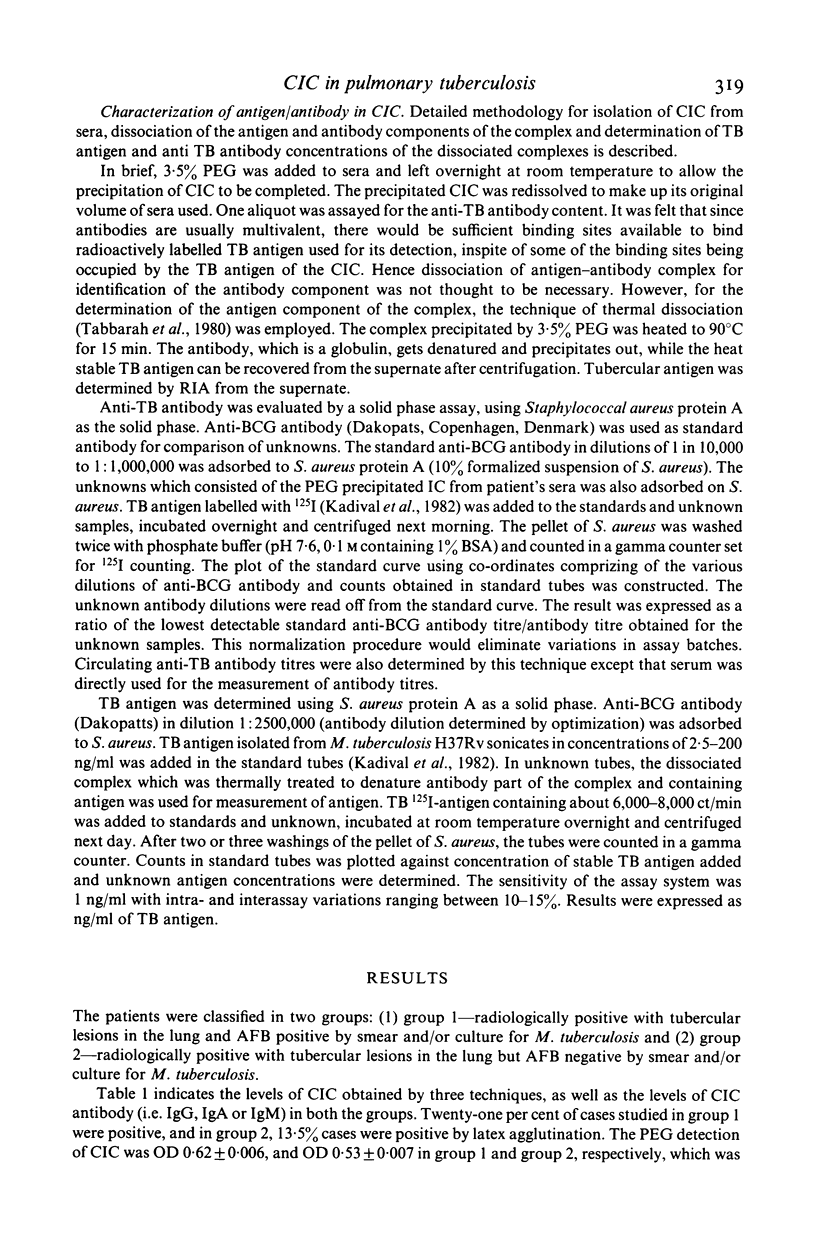
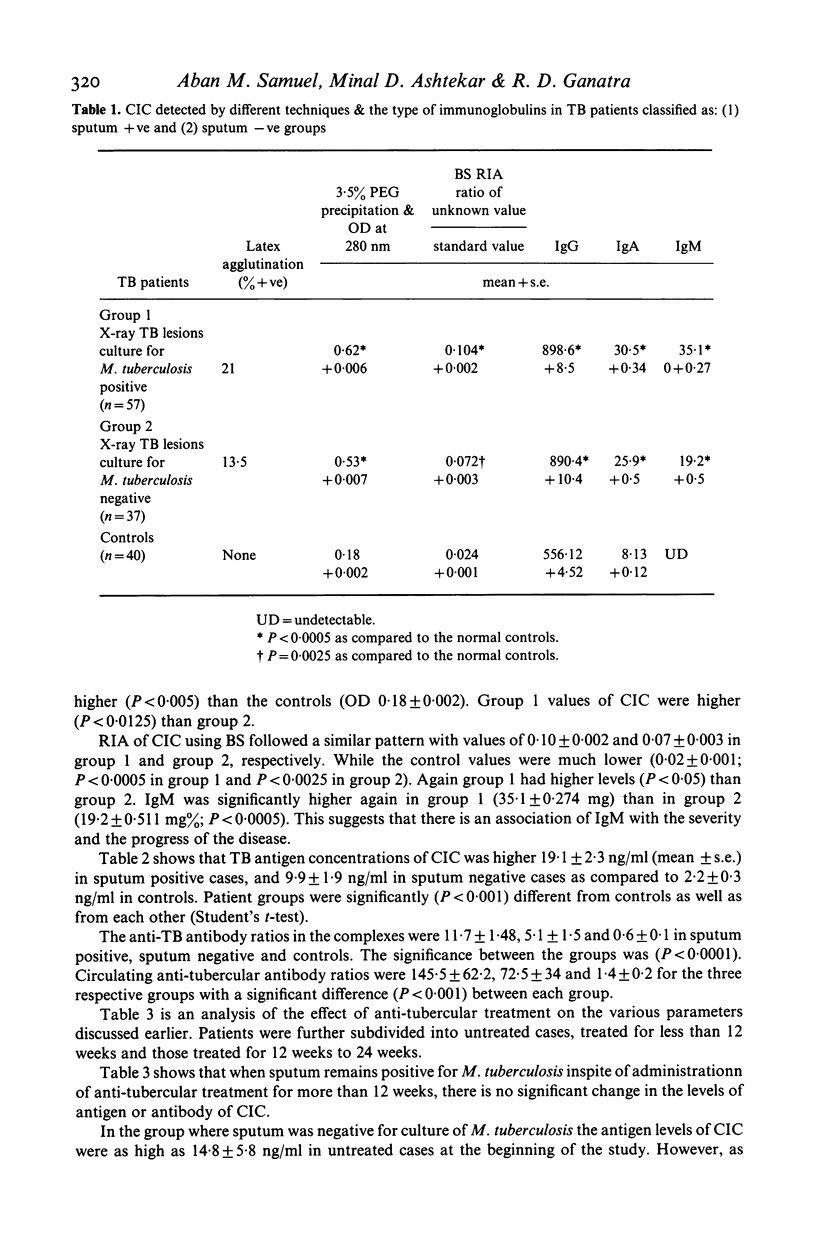
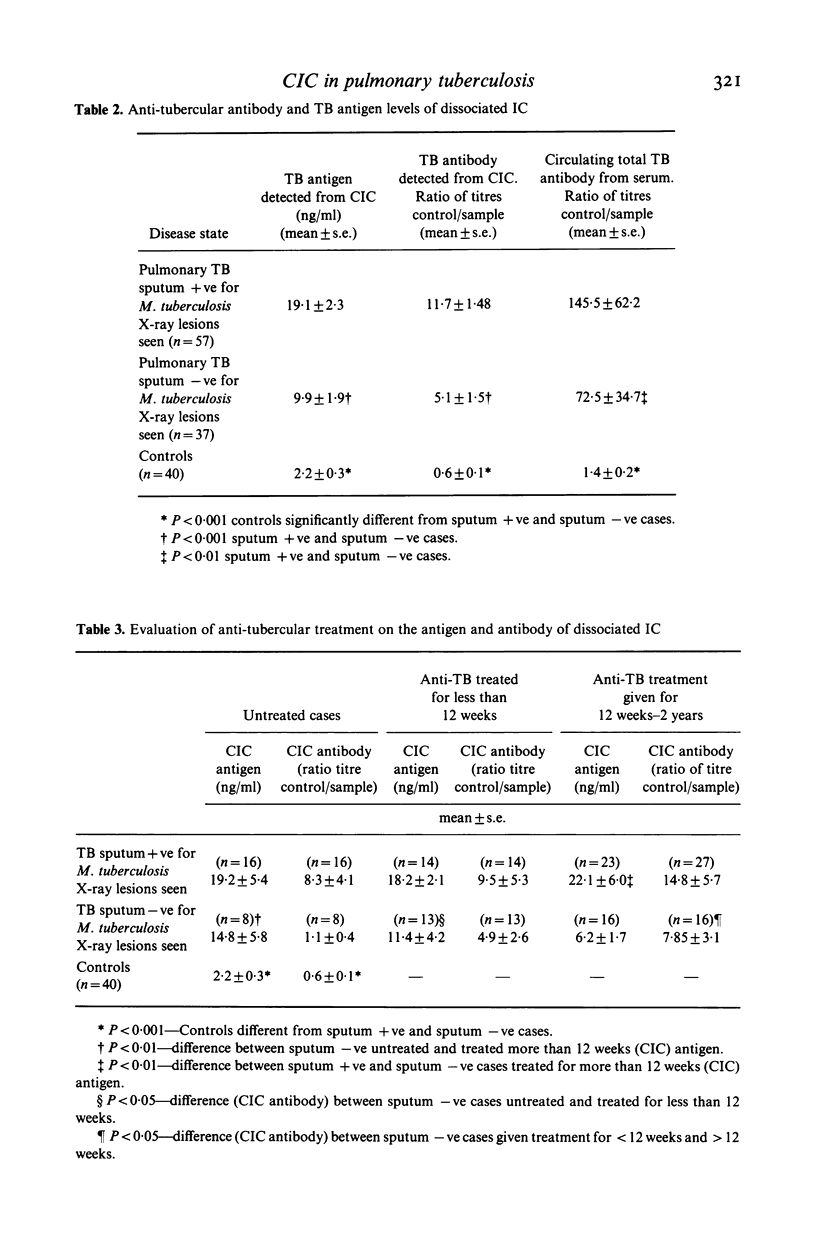
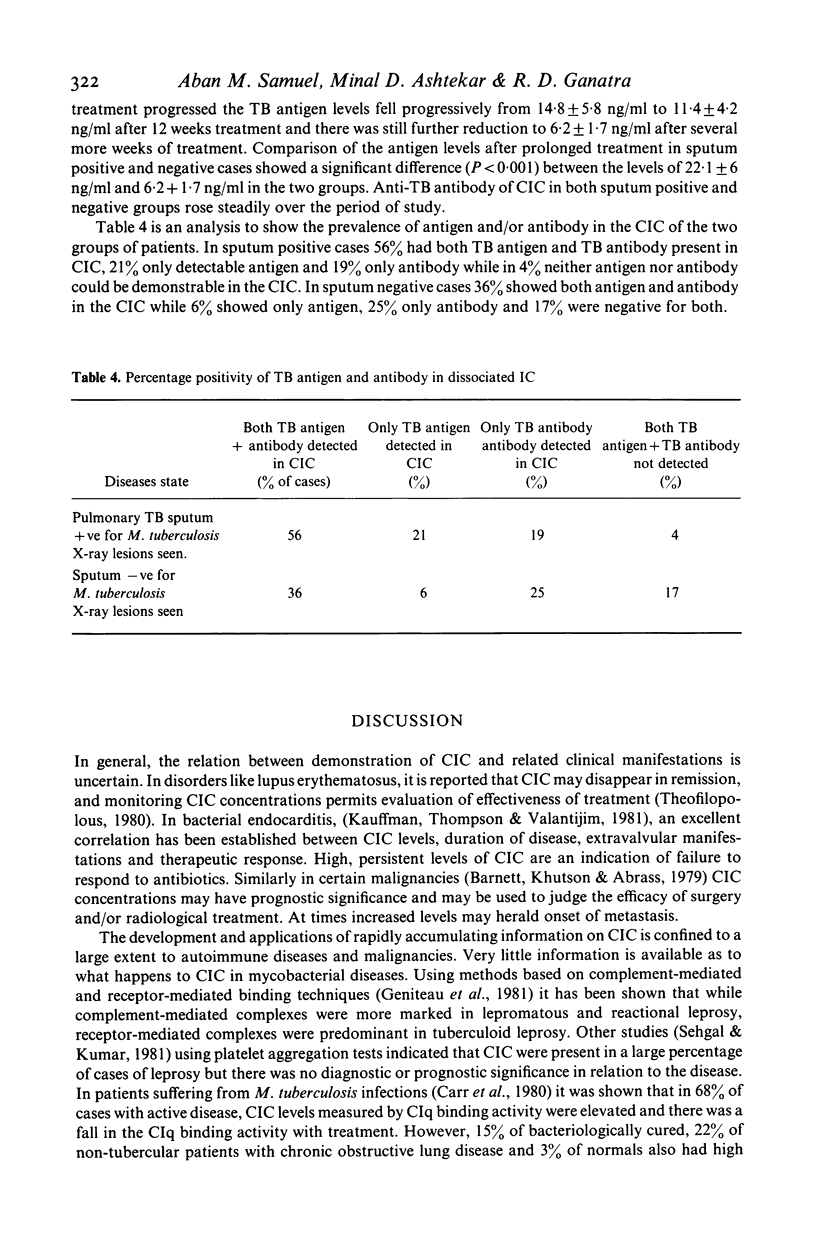
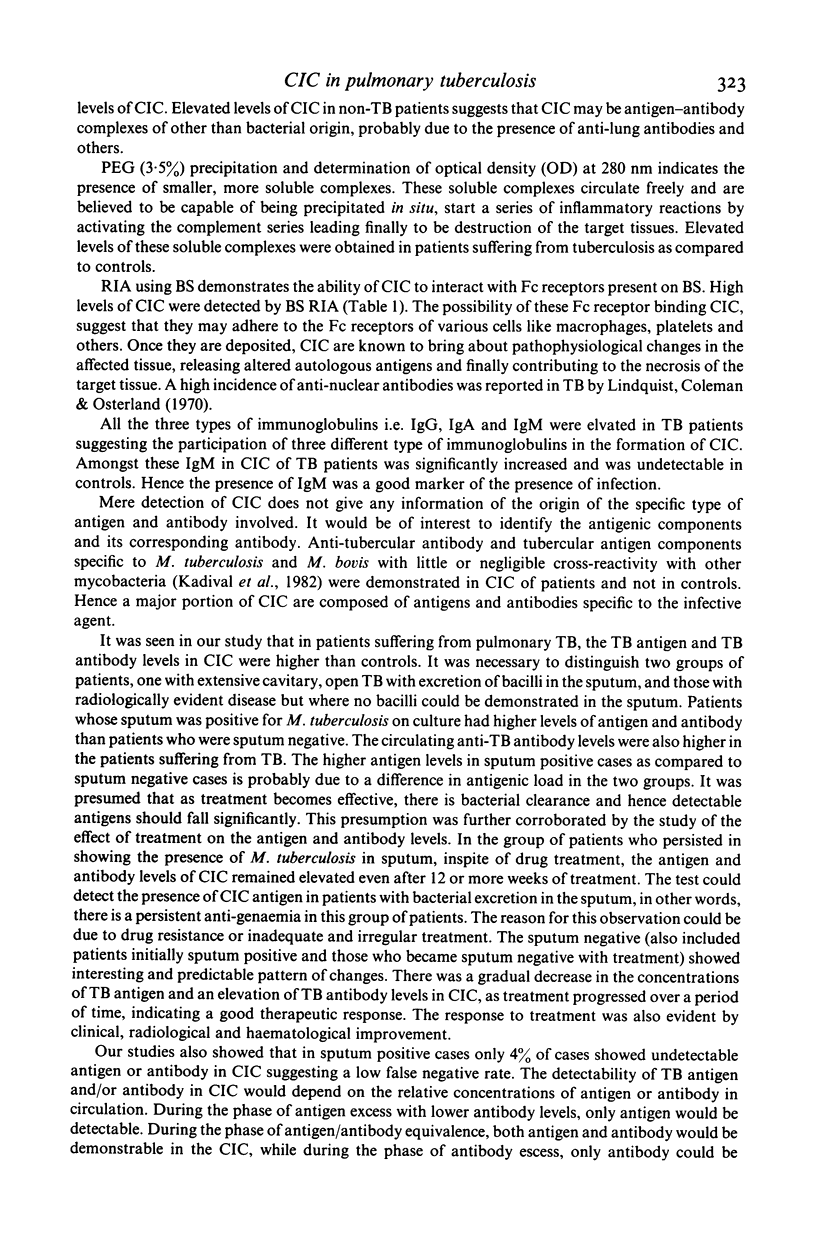
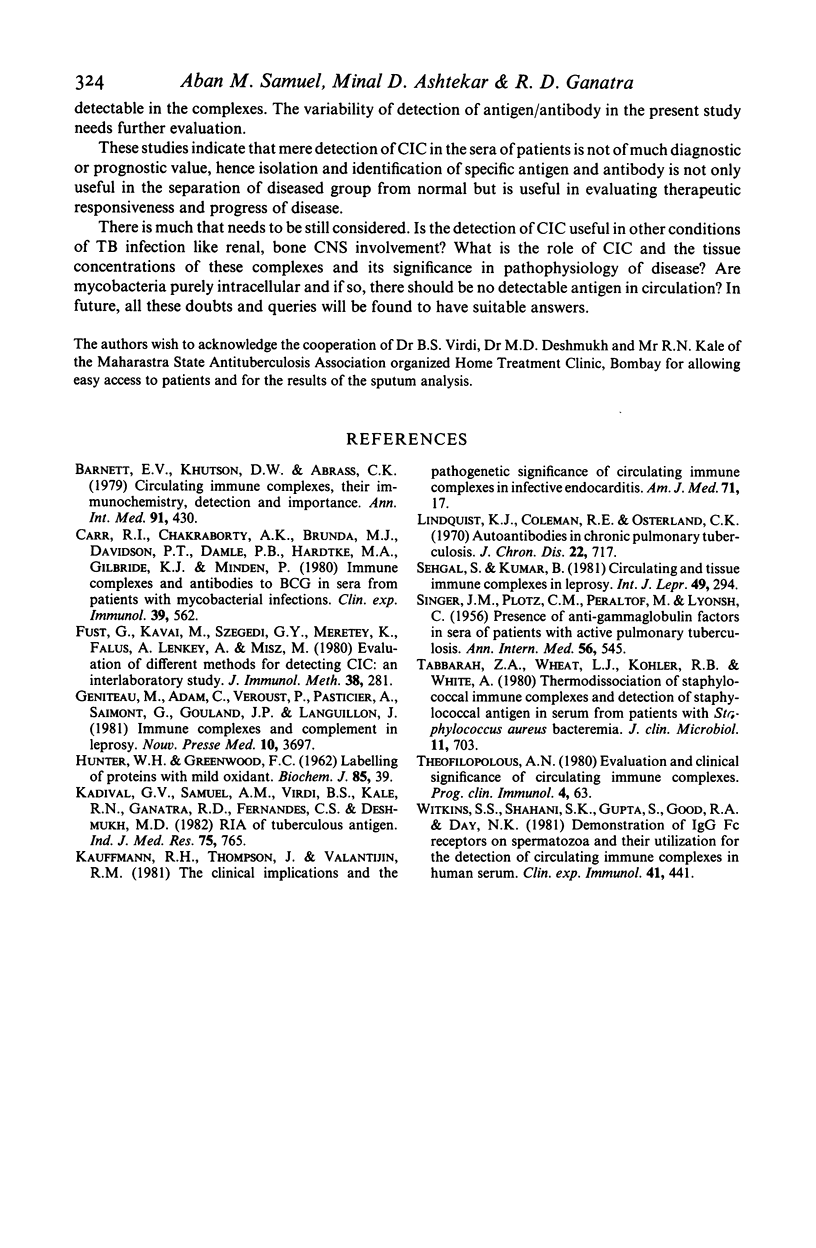
Selected References
These references are in PubMed. This may not be the complete list of references from this article.
- Carr R. I., Chakraborty A. K., Brunda M. J., Davidson P. T., Damle P. B., Hardtke M. A., Gilbride K. J., Minden P. Immune complexes and antibodies to BCG in sera from patients with mycobacterial infections. Clin Exp Immunol. 1980 Mar;39(3):562–569. [PMC free article] [PubMed] [Google Scholar]
- Füst G., Kavai M., Szegedi G., Meretey K., Falus A., Lenkey A., Misz M. Evaluation of different methods for detecting circulating immune complexes. An inter-laboratory study. J Immunol Methods. 1980;38(3-4):281–289. doi: 10.1016/0022-1759(80)90276-8. [DOI] [PubMed] [Google Scholar]
- Geniteau M., Adam C., Verroust P., Pasticier A., Saimot G., Coulaud J. P., Languillon J. Les complexes immuns et le complément dans la lèpre. Nouv Presse Med. 1981 Dec 12;10(45):3697–3700. [PubMed] [Google Scholar]
- Kauffmann R. H., Thompson J., Valentijn R. M., Daha M. R., Van Es L. A. The clinical implications and the pathogenetic significance of circulating immune complexes in infective endocarditis. Am J Med. 1981 Jul;71(1):17–25. doi: 10.1016/0002-9343(81)90253-9. [DOI] [PubMed] [Google Scholar]
- Lindqvist K. J., Coleman R. E., Osterland C. K. Autoantibodies in chronic pulmonary tuberculosis. J Chronic Dis. 1970 Apr;22(11):717–725. doi: 10.1016/0021-9681(70)90047-0. [DOI] [PubMed] [Google Scholar]
- SINGER J. M., PLOTZ C. M., PERLATA F. M., LYONS H. C. The presence of anti-gamma globulin factors in sera of patients with active pulmonary tuberculosis. Ann Intern Med. 1962 Apr;56:545–552. doi: 10.7326/0003-4819-56-4-545. [DOI] [PubMed] [Google Scholar]
- Sehgal S., Kumar B. Circulating and tissue immune complexes in leprosy. Int J Lepr Other Mycobact Dis. 1981 Sep;49(3):294–301. [PubMed] [Google Scholar]
- Tabbarah Z. A., Wheat L. J., Kohler R. B., White A. Thermodissociation of staphylococcal immune complexes and detection of staphylococcal antigen in serum from patients with Staphylococcus aureus bacteremia. J Clin Microbiol. 1980 Jun;11(6):703–709. doi: 10.1128/jcm.11.6.703-709.1980. [DOI] [PMC free article] [PubMed] [Google Scholar]
- Theofilopoulos A. N. Evaluation and clinical significance of circulating immune complexes. Prog Clin Immunol. 1980;4:63–106. [PubMed] [Google Scholar]
- UCLA conference. Circulating immune complexes: their immunochemistry, detection, and importance. Ann Intern Med. 1979 Sep;91(3):430–440. doi: 10.7326/0003-4819-91-3-430. [DOI] [PubMed] [Google Scholar]
- Witkin S. S., Shahani S. K., Gupta S., Good R. A., Day N. K. Demonstration of IgG Fc receptors on spermatozoa and their utilization for the detection of circulating immune complexes in human serum. Clin Exp Immunol. 1980 Sep;41(3):441–452. [PMC free article] [PubMed] [Google Scholar]


